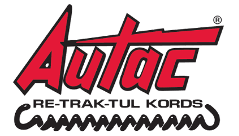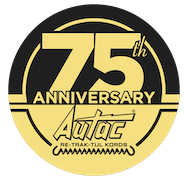In the world of cables and cords, there’s often a choice to be made between convenience and functionality. Two common options are spiral cables and curly cords, both of which have their merits and applications. But when it comes to selecting the ideal choice for your needs, how do you decide? In this article, we’ll delve into the characteristics, uses, and considerations of spiral cables and curly cords to help you make an informed choice.
Spiral Cables: The Stretchable Workhorse
Spiral cables, also known as coiled cables, are characterized by their stretchable design. These cables are typically made by coiling wires around a central core, allowing them to extend and retract with ease. Here are some key points to consider:
- Stretchable Length: The primary advantage of spiral cables is their ability to extend over a considerable distance while remaining compact when not in use. This makes them ideal for applications where flexibility and space-saving are crucial.
- Durability: Spiral cables are designed to withstand repeated stretching and coiling, making them durable in applications that involve frequent movement or flexing.
- Common Uses: Spiral cables are commonly found in telephone cords, some types of headphone cables, and various industrial and automotive applications where cable management is important.
- Considerations: While their stretchability is a plus, spiral cables can become tangled or kinked if not handled carefully. This can lead to signal interference or damage over time.
Curly Cords: The Coiled Communicator
Curly cords, also known as coiled cords, are similar in design to spiral cables but are often used for specific applications, particularly in communication devices. Here’s what you need to know about them:
- Retraction: Curly cords are designed to retract to a shorter length when not in use, making them convenient for devices like landline phones and certain types of microphones.
- Applications: They are commonly used in telephone handsets, old-style telephone receivers, and some specialized electronic devices where cable length adjustability is essential.
- Durability: Curly cords are built to withstand frequent stretching and coiling, ensuring longevity in their intended applications.
- Limitations: While excellent for their intended purposes, curly cords may not be as versatile as spiral cables due to their fixed retraction length.
Choosing the Ideal Cord: Consider Your Needs
The choice between spiral cables and curly cords ultimately depends on your specific needs and applications. Here are some factors to consider:
- Flexibility: If you require a cable that can stretch and retract over long distances, spiral cables may be the better choice.
- Compactness: For devices where space-saving is crucial, curly cords with their retractable design may be more suitable.
- Durability: Both options are durable, but consider the frequency of stretching and coiling in your application.
- Signal Quality: Be aware that improper handling of either type of cord can lead to signal interference or damage, so care is essential.
- Specific Applications: Some devices are designed with one type of cord in mind. If compatibility is a concern, choose accordingly.
Flexible or Coiled? Spiral Cables vs. Curly Cords Demystified
In the world of cables and cords, the choice between spiral cables and curly cords can sometimes seem perplexing. Both have their unique characteristics and applications and understanding the differences is essential to select the right option for your specific needs. In this article, we’ll demystify the world of cables by examining the features, applications, and advantages of spiral cables and curly cords.
Spiral Cables: The Stretchable Marvels
Spiral cables, often referred to as coiled cables, are renowned for their stretchable design. They are created by winding wires around a central core, allowing them to extend and retract easily. Here’s what you need to know about them:
- Stretchable Length: The primary advantage of spiral cables lies in their ability to extend over considerable distances while remaining compact when not in use. This makes them ideal for applications where flexibility and space-saving are paramount.
- Durability: Spiral cables are engineered to withstand frequent stretching and coiling, making them a durable choice for applications involving repeated movement or flexing.
- Common Uses: Spiral cables are commonly found in telephone cords, certain types of headphone cables, and various industrial and automotive applications where efficient cable management is essential.
- Considerations: Despite their stretchability, spiral cables can become tangled or kinked if not handled carefully, potentially leading to signal interference or damage over time.
Curly Cords: The Coiled Communicators
Curly cords, also known as coiled cords, share a similar design with spiral cables but are often used for specific applications, especially in communication devices. Here’s a closer look at curly cords:
- Retraction: Curly cords are designed to retract to a shorter length when not in use, making them particularly convenient for devices like landline phones and specific types of microphones.
- Applications: They are commonly used in telephone handsets, old-style telephone receivers, and specialized electronic devices where adjustable cable length is a crucial feature.
- Durability: Just like spiral cables, curly cords are built to endure frequent stretching and coiling, ensuring a long lifespan in their intended applications.
- Limitations: Curly cords, however, may not offer the same versatility as spiral cables due to their fixed retraction length, which can limit their applications.
Choosing the Ideal Cord: Tailoring to Your Needs
The choice between spiral cables and curly cords hinges on your specific requirements. Here are some factors to consider:
- Flexibility: If you need a cable that can extend and retract over long distances, spiral cables are often the better choice.
- Compactness: For devices where space-saving is crucial, curly cords, with their retractable design, maybe the more suitable option.
- Durability: Both types are known for their durability, but you should factor in the frequency of stretching and coiling in your application.
- Signal Quality: Improper handling of either cable type can result in signal interference or damage, so careful use is crucial.
- Specific Applications: Some devices are designed with one type of cord in mind, to ensure compatibility.
The decision between spiral cables and curly cords ultimately depends on your unique requirements. Each type offers distinct advantages, so understanding your needs and the considerations mentioned above will help you select the ideal cord for your application, whether it’s for communication devices, industrial equipment, or any other context where efficient cable management is essential.
Conclusion!!
In conclusion, the choice between spiral cables and curly cords depends on your unique requirements. Each type offers distinct advantages, so understanding your needs and considering the factors mentioned above will help you select the ideal cord for your application, whether it’s for communication devices, industrial equipment, or any other purpose where cable management matters.




Recent Comments